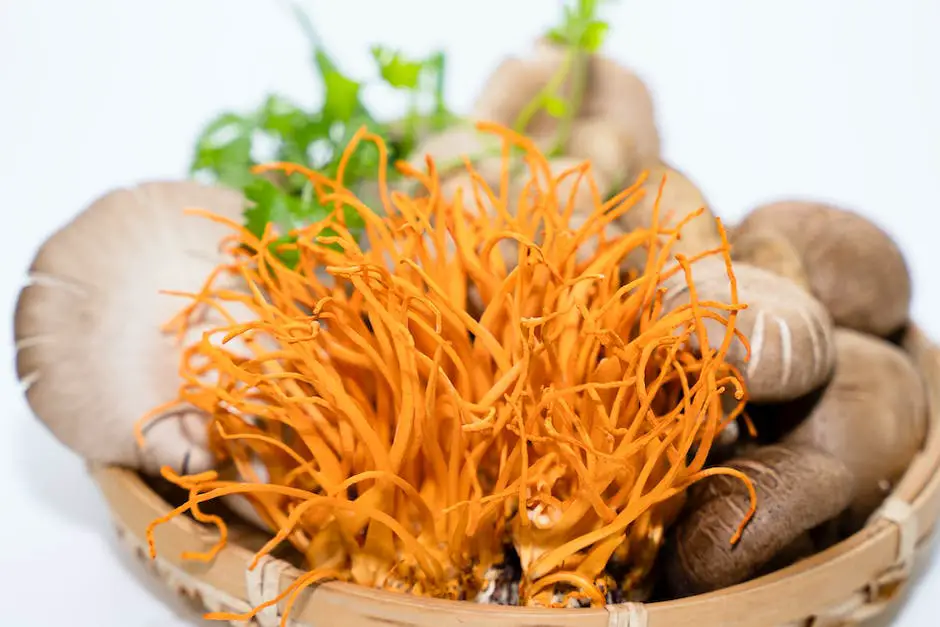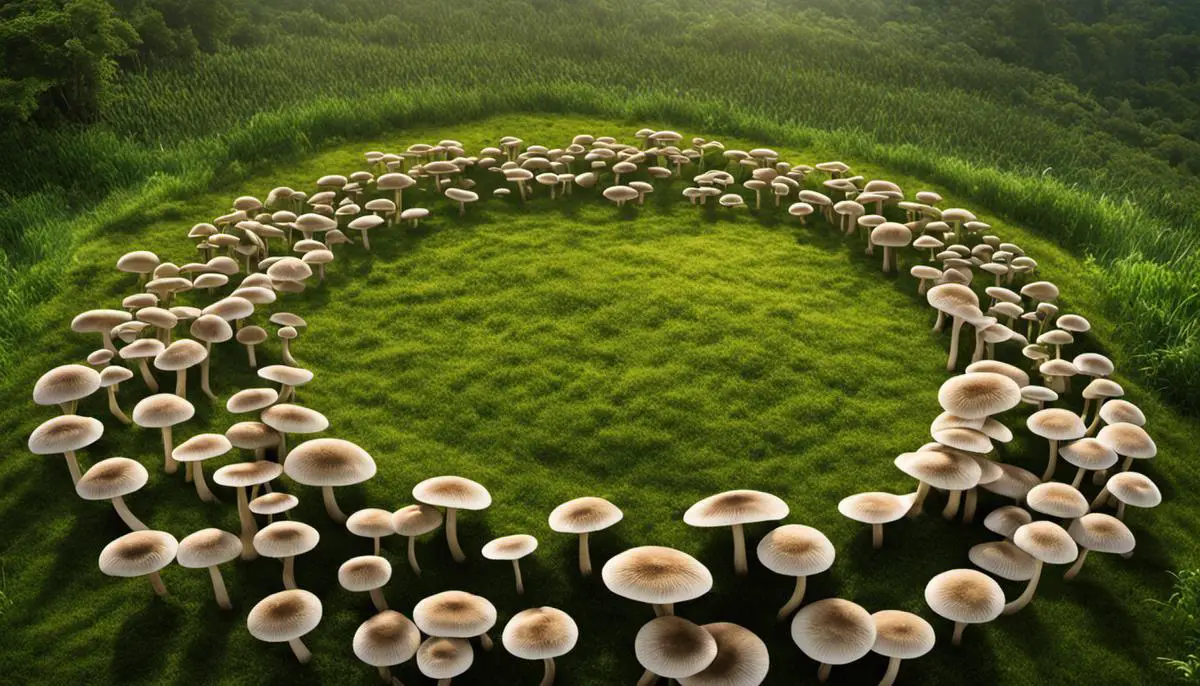Have you ever walked through a forest or park and noticed a strange circular formation of mushrooms? These enigmatic patterns, often referred to as ‘Fairy Rings’, have intrigued and mystified humans for centuries, making appearances in folklore and becoming subjects of scientific inquiry. Uncovering the nature of these peculiar formations takes us on a fascinating journey through the realm of biology, where we get to understand the role of mycelium in mushroom growth and the unique interplay between fungi and their environment. Moreover, this curious growth pattern has not only cultural and historical significance, but is also paramount to a healthy ecosystem, playing a crucial role in soil health, plant growth, and biodiversity.
Understanding Fairy Rings
Understanding Fairy Rings
Fairy rings—also known as fairy circles, elf circles, and pixie rings—are a fascinating natural phenomenon primarily associated with fungi, including, most commonly, mushrooms. They appear as rings or arcs of mushrooms, but can also present as a visible ring of darker, taller grass. The name ‘fairy rings’ is steeped in folklore from various cultures, and they were traditionally believed to be portals to elf or fairy worlds.
Reader Poll: What online courses would interest you?
Growth Pattern of Mushrooms
Why do fairy rings occur? The answer lies in the mushroom’s growth pattern. Mushrooms grow from a network of thin, string-like structures called mycelium, found beneath the soil surface. This fungal network expands underground from a central point, reaching out in all directions in search of nutrients. As the mycelium breaks down organic material, it releases nutrients that cause the grass to become greener and grow taller, creating a visual circle.
Eventually, the nutrients in the center of the mycelium network are exhausted. As it continues to grow outward, it leaves behind a circular area, wherein the formation of mushrooms becomes more sporadic. Therefore, a ring of mushrooms appears around the edge of the circle where the nutrient-rich mycelium is now concentrated. As the mushroom’s spores produce new mycelium, the circle continues to expand each year.
Historical and Cultural Significance of Fairy Rings
Throughout centuries, fairy rings have been a part of folklore and myth across multiple cultures due to their mysterious, almost magical, appearances. European and Celtic legends saw fairy rings as the location of fairies or elves dancing, hence the name. They were often viewed with awe, fear, and superstition, as many believed that to enter a fairy ring could lead to misfortune or the displeasure of the fairies.
Subscribe to our newsletter!
In more modern contexts, fairy rings can cause damage to lawns and golf courses due to the dense mycelium network disrupting water flow within the soil. They are often seen as a nuisance, but their biological and cultural significance cannot be overlooked. Despite this, they serve a vital role in breaking down organic material and releasing nutrients back into the ecosystem.
The Intersection of Mycology and Human Beliefs
It’s fascinating to observe how the growth patterns of fungi can weave seamlessly through human beliefs and interactions within our natural world. This dual significance provides an intriguing context and deeper meaning to our connection with these unique organisms.

Mycelium and Mushroom Growth
Diving Deeper: The Role of Mycelium in Mushroom Growth
Beneath the recognizable caps and stems, mushrooms, are the reproductive structures of fungi, which largely exist as an unseen network of threads, the mycelium. The mycelium, residing underneath the soil or within a food source, acts as the nutritional core and expansion modulator for the fungus.
When the environment accommodates, the mycelium gives rise to mushrooms, helping it dispense its spores. The visible mushroom is merely the tip of the iceberg, representing a small part of a much larger organism. The bulk of this vast life-form is concealed beneath the surface, remaining as an expansive network of mycelium threads.
Propagation: How Mycelium Spreads
The mycelium of one mushroom continues to grow outwards underneath the ground, searching for new food sources. As it grows, it utilizes nutrients from the soil to reproduce and expand its network. When the mycelium network comes across ample nutrients and water, it develops a new mushroom which ends up surfacing above the ground.
As a result, the mushrooms, when seen from above ground, appear to be arranged in a circular or arc-like pattern. This pattern, interestingly, represents the boundary of the underground mycelium network, providing them with a radial growth formation.
Why Mushrooms Grow in Circles: Fairy Rings Explained
The phenomenon of mushrooms growing in circles is known as a fairy ring. This happens when the mycelium of a mushroom produces a fruiting body, typically after a heavy rain and under perfect temperature conditions. The growing network of mycelium expands outwards on all sides in a roughly circular pattern.
As the mycelium grows and expands, it consumes nutrients in the soil. The most fertile ground is at the edge of the colony, where the mycelium is still expanding. This is why new mushrooms tend to appear at the periphery of the last growth, giving the appearance of a moving, expanding ring. The interior of the ring can sometimes die off, either from lack of nutrients or other environmental factors, which emphasizes the ring-like appearance of the mushroom growth.
Each individual fairy ring expands at its rate, and the distance between the mushrooms in the fairy ring reveals the rate of the mycelium expansion.
Understanding Mushroom Growth Patterns
Mushrooms grow influenced by a variety of environmental conditions like food availability, temperature, humidity, and soil composition. These factors can significantly affect the speed and pattern of mushroom mycelium growth, often leading to the formation of intriguing circular structures known as fairy rings. However, these same factors also hold the potential to disrupt this rhythmic pattern, depending on their intensity and location.
For example, if water is more abundant on one side, the mycelium might tend to grow faster towards it, breaking the general circular pattern. Physical obstructions like stones or buildings can also change the mycelium’s growth direction, thereby affecting the growth and arrangement of the mushroom bodies, or fruiting bodies as they’re scientifically known. Moreover, the presence of other organisms can influence mycelium development hence impacting the appearance of fairy rings.
In summary, fairy rings expose the magical world of fungal networks hidden beneath the earth’s surface. These enchanting mushroom circles go beyond mere aesthetics; they demonstrate the adaptability and resilience of the fungi kingdom in response to varying environmental conditions.

The Ecological Significance of Circular Mushroom Formation
The Role of Symbiosis in Fairy Ring Formation
Another intriguing aspect of mushroom growth is their ability to form “Fairy Rings,” especially noticeable when observed from an aerial perspective. This fascinating circular formation is typically associated with either saprophytic or mycorrhizal fungi species. The mycorrhizal species engage in an essential symbiotic relationship with plants. They exchange critical nutrients through their extensive underground hyphal network for carbohydrates from the plants. In essence, this relationship extends the plant’s root system, improving its ability to absorb water and nutrients from the soil. This symbiotic dynamic plays a crucial role in the fairy ring phenomenon, evidencing once again the intricate interplay between fungi and their surrounding environment.
The Original Spawn and Radial Growth
The phenomenon of fairy rings begins from a single fungal spore, germinating to produce a mass of hyphae known as mycelium. This mycelial network grows radially outward, consuming organic matter in the soil as a food source. The most active and highest nutrient consumption occurs at the edge of the mycelium. This process repeats as the edge of the ring advances, feeding on the nutrients in their path, hence the circular pattern.
Ring Expansion and Impact on Soil Health
As the mycelium grows outward, it exhausts the food source in the center as the hyphae secretes enzymes that break down organic material in the soil into simpler compounds that the mushroom can absorb. Consequently, the central area, devoid of nutrients, leads to a visible ring in grassy areas, with lush growth on the outer edge due to the increased availability of nutrients from the fungal activity, hence contributing to soil fertility in those zones.
Biodiversity: A Consequence of the Fairy Ring
The fairy ring’s structure and nutritional activities have a significant impact on biodiversity within the ecosystem. The mycelial network creates microhabitats that host a plethora of microorganisms, each contributing to the ecosystem’s biogeochemical cycles. Consequently, the fairy ring contributes to above-ground and below-ground biodiversity, serving as a hotspot for various species.
Dynamics of Plant Growth and Fairy Rings
As the fairy ring continues to expand, it comes into contact with different plant species. Depending on the type of mushroom and the host plant, the relationship can range from mutualistic, where both partners benefit, to pathogenic, where the mushroom causes disease in the plant. Thus, the circle’s progression significantly influences plant diversity and health.
Given these points, it’s crucial to note that the fairy ring, while a simple circular growth pattern, has complex ecological implications. By influencing soil health, plant growth, and biodiversity, these fungal formations contribute significantly to the ecosystem’s dynamics.

Altogether, the mushroom’s captivating round pattern of growth is not merely a random manifestation, but a consequence of a complex and efficient biological process, a historical source of human fascination, and a valuable contributor to our ecosystems. Understanding this nuanced phenomenon enables us to appreciate the beautiful intricacies of nature and reinforces just how significantly these humble fungi continue to affect our lives and the world around us. From fairy tales to field studies, the circular formations of mushrooms, intricately tied to their mycelium network and their environment, remain a potent symbol of the intricate, interconnected web that is life on Earth.

